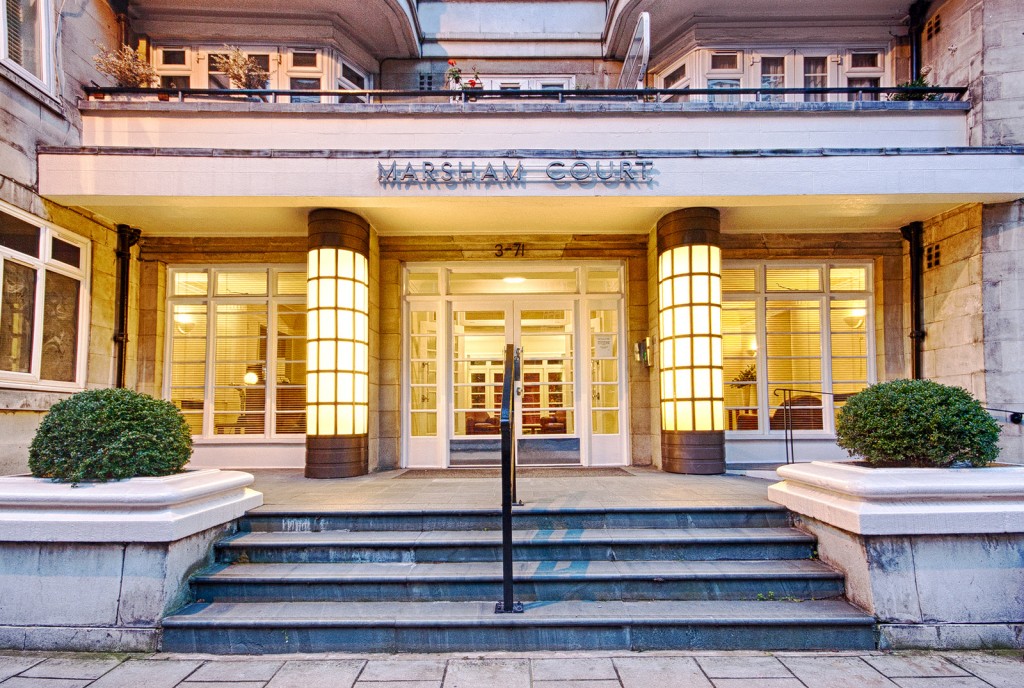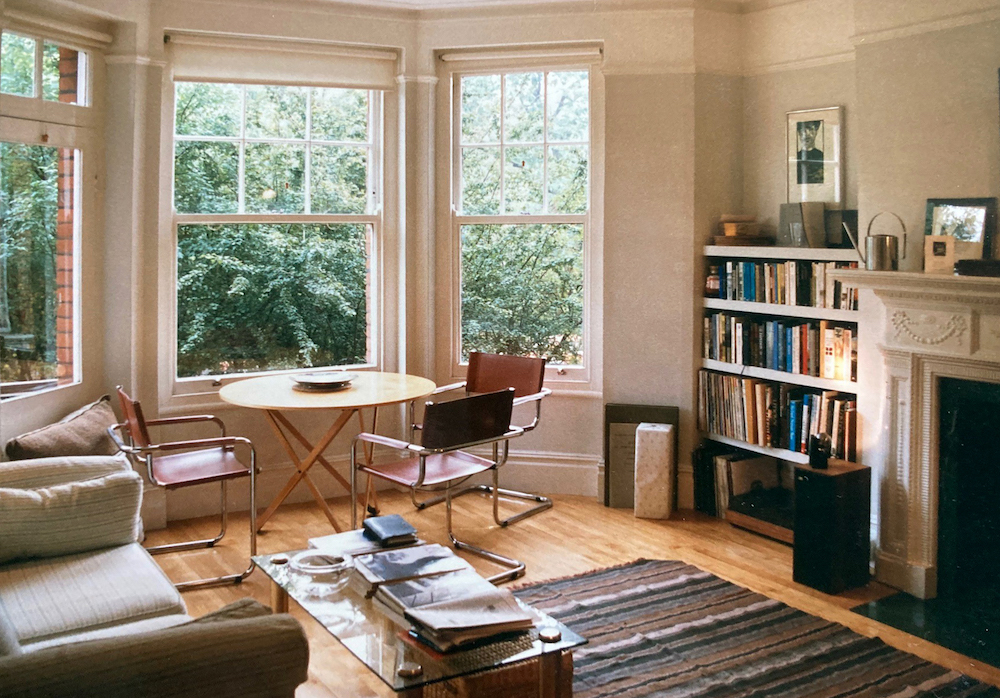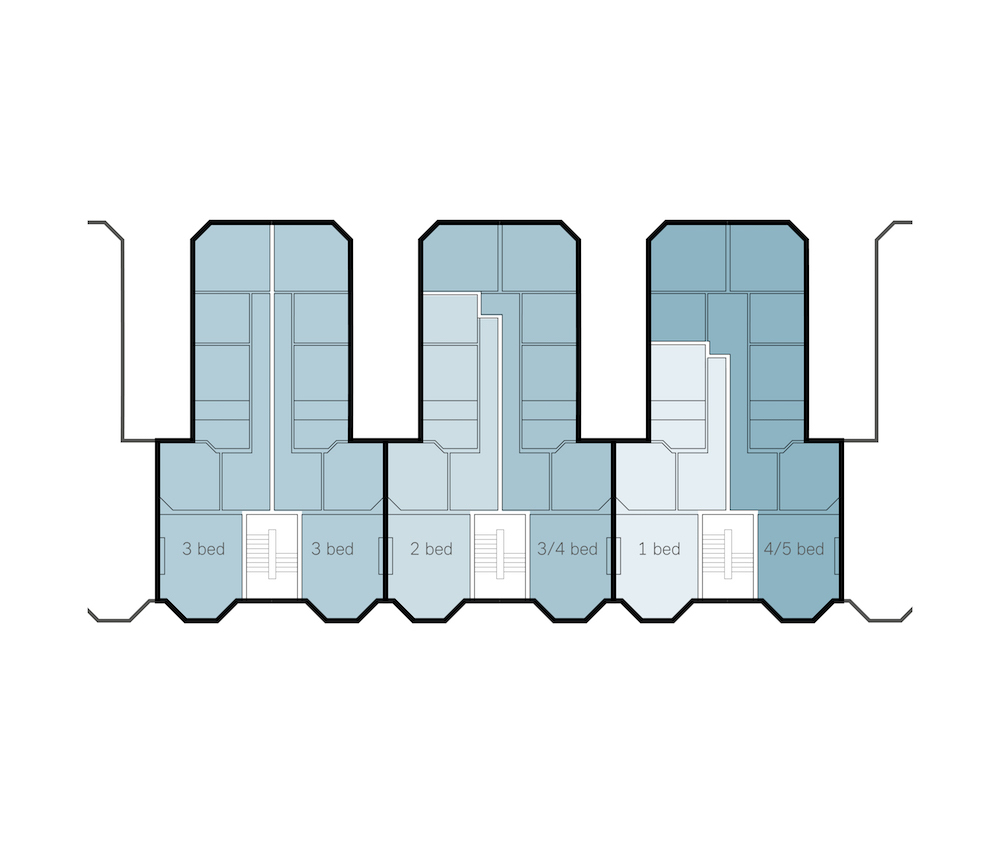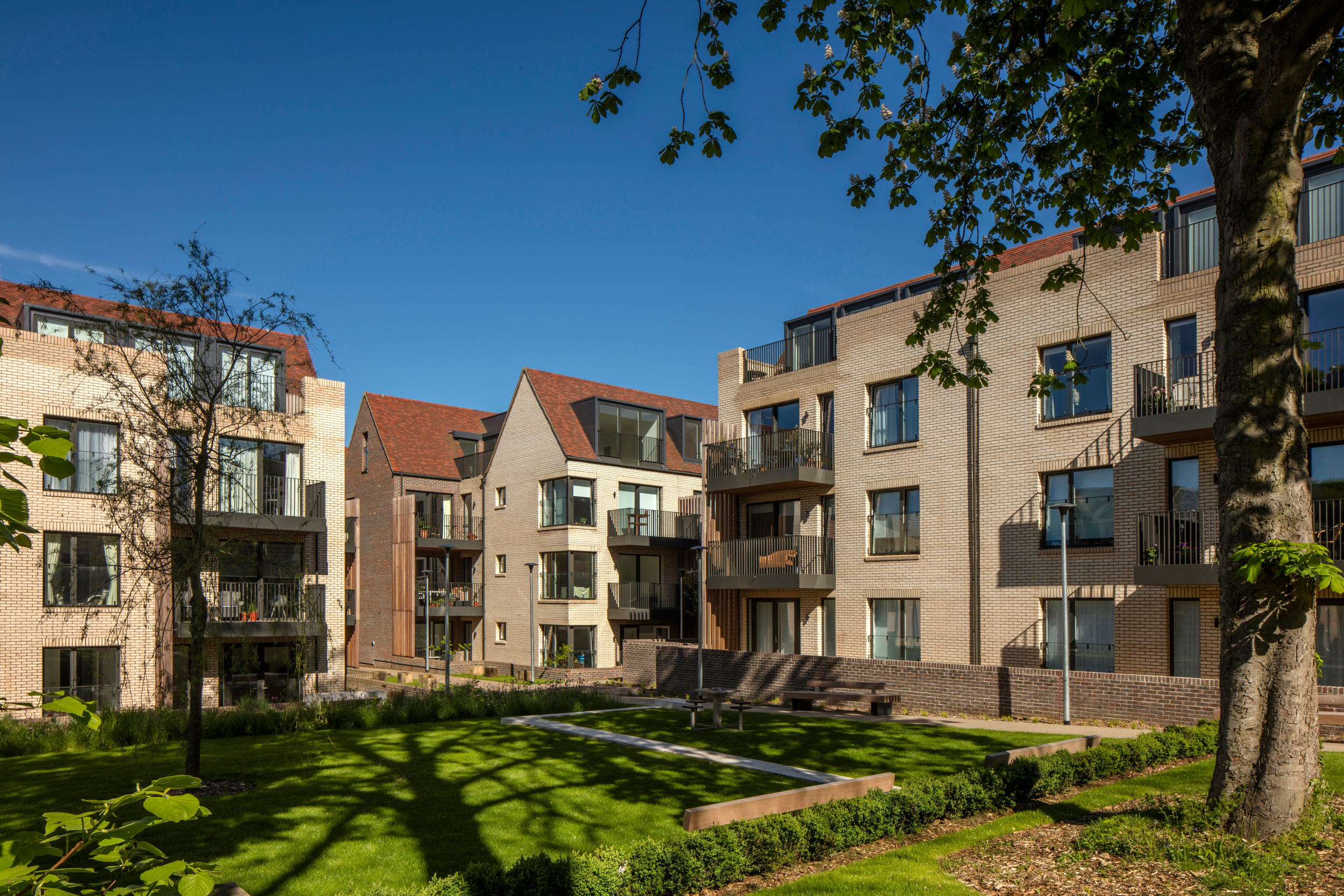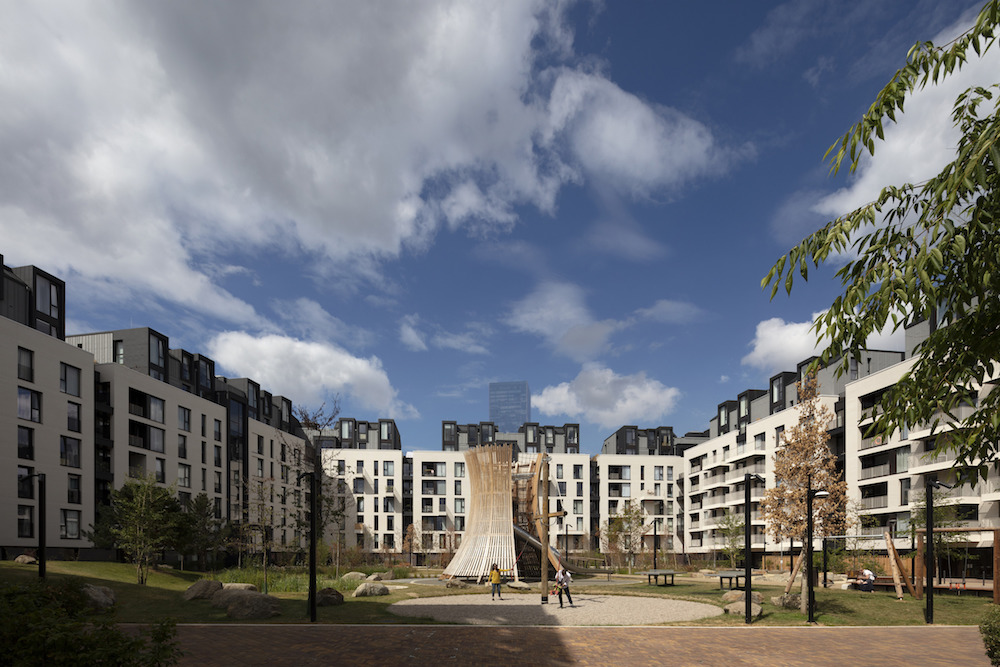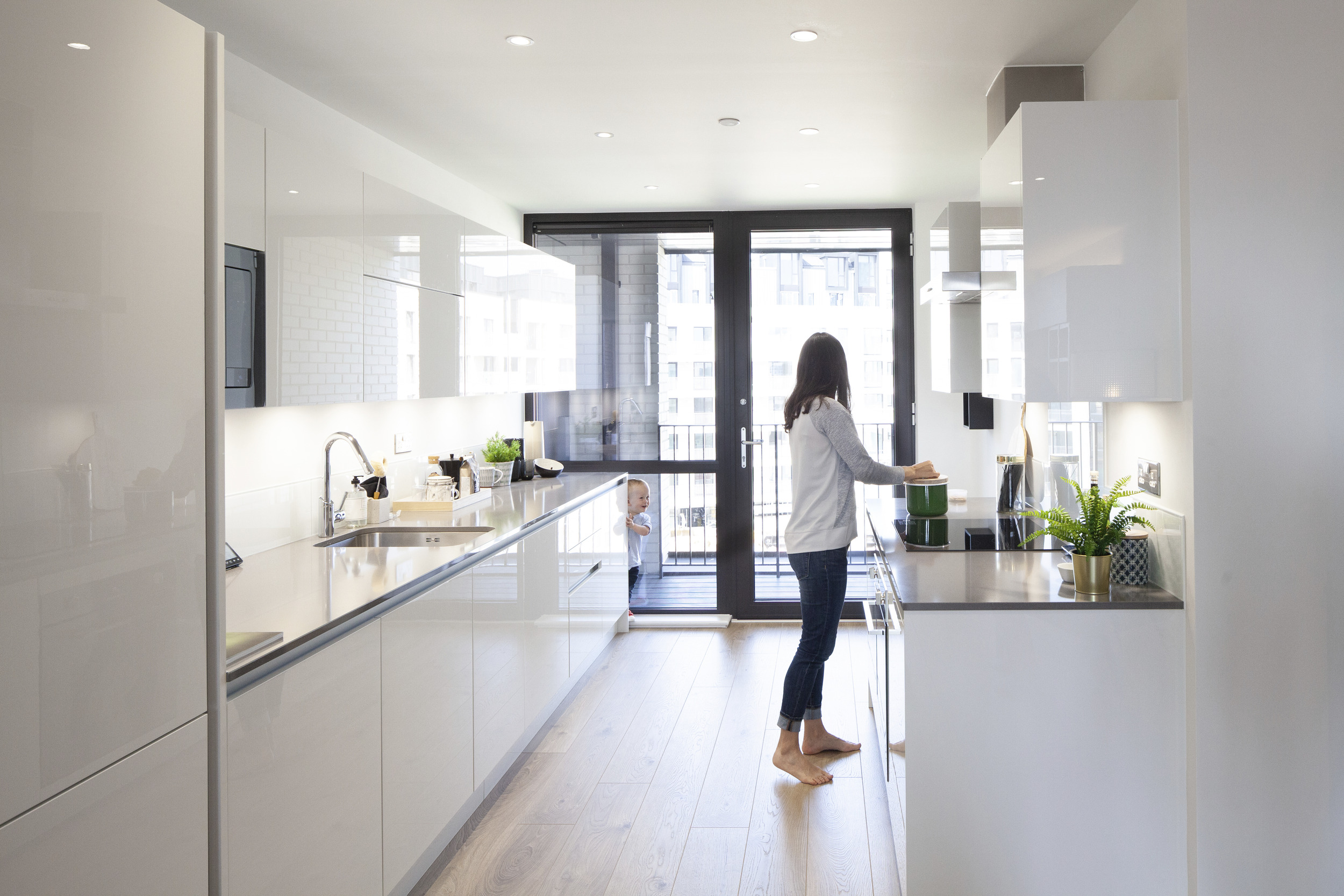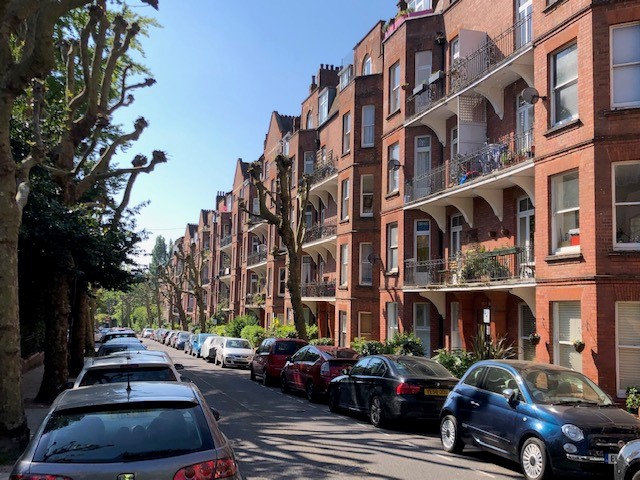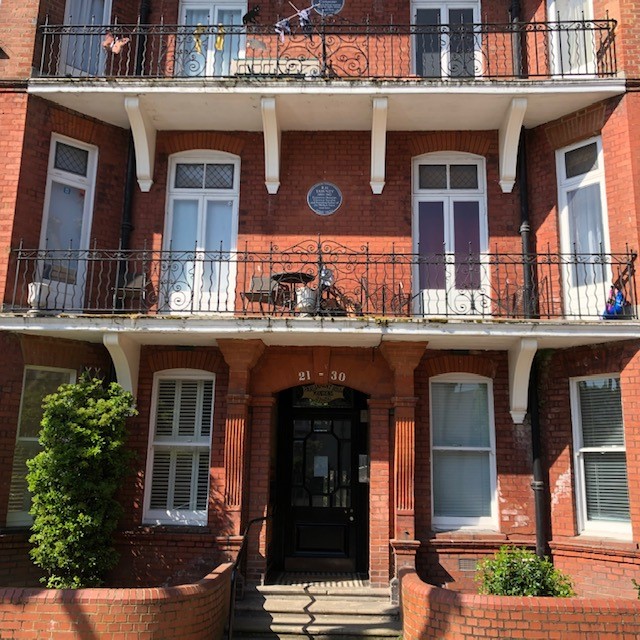Post
Andrew Beharrell: Mansions for the Many II
11 Feb 2021
The second part of Andrew Beharrell's look at the London Mansion Block, and how it has influenced his life and career. Part I is here, and you can download the whole piece here as a PDF.
A former director and senior partner at architects' Pollard Thomas Edwards, Andrew Beharrell has designed and delivered many award-winning projects throughout his 30-plus years with the practice. Now, as one of two senior advisors, he lends his expertise to PTE’s research and development group Knowledge Hub, maintaining and improving design standards across the practice.
Marsham Court
When I first moved to London as a newly graduated architect I lodged with a childhood friend: our mothers had met in the wartime navy, and his had later lived in Marsham Street, in what was then a serviced apartment, with meals, laundry and cleaning services available on site: rather like today’s top-end build to rent developments, with their lavish facilities and service charges to match.
Marsham Court was designed by T P Bennett & Son in 1937, with Critall windows and curved balconies in a restrained ‘moderne’ style. Its ten storeys, matching its opposite neighbour, left the narrow street and many of the flats in permanent shadow, but gave me the exciting illusion of living in New York rather than London. My little bedroom enjoyed a different hallucinatory outlook at the back: Edwin Lutyens’s Page Street housing estate (1930), a rare foray into social housing for the master of the country house and viceregal palace. Keeping the deck-access form strictly rational, he decorated the facades with super-sized chequer-board squares of brick and white render, and these greeted me each morning a few feet from my window. From the fourth floor we could see the sky only by leaning out.
Marsham Court, and its many siblings in 1930’s London, still just about meet my criteria for a ‘mansion block’, although the height stretches my definition of mid-rise. There are six flats around each landing, rather than the conventional pairing, but mercifully there are lifts. Another key innovation is the uniting of two cores at ground level into one entrance foyer, which was presided over by a terrifying ex-army porter, who was rumoured to have spent time in the military prison at Colchester. He disapproved strongly of my bicycle, which lowered the tone when I wheeled it through the foyer into the rear service yard. Unlike today’s London Plan requirement for lavish cycle stores in every apartment block, Marsham Court had no facilities, and I parked by the bins. There was an upside to this: the service yard was shared with an up-market restaurant favoured by the political establishment, and in the summer months I would arrive home to observe the manager Germano dining early by the bins. His table was laid with linen, crystal and silverware, and the sommelier and waiting staff practiced their trade under his critical eye.
Residents enjoyed a discount in the restaurant, and we occasionally ate there. On one occasion my friend’s lemon sorbet featured an unintended garnish of broken glass, which embedded itself in his tongue. Fortunately, the Westminster Hospital across the street had not yet been converted into luxury flats. We were seen to immediately and returned to finish our meal and cauterise the wound with brandy: ‘’I’m so glad this happened to you and not one of my more difficult customers’’.
At around 61 sqm the flats were compact and closely pre-figured today’s national space standard. The small living room struggled to contain a full-length Edwardian portrait of my landlord’s formidable grandmother on her wedding day. On 29 July 1981 a dozen friends clustered around our little Sony Trinitron to celebrate the wedding of Charles and Diana.
Today’s London Plan requires every flat to have a decent balcony, big enough for outdoor meals and lockdown cocktails. It was not always so: Marsham Court and the Edwardian flats in this story had decorative balconies which were not much use for anything except a few unhappy pot plants. However, we did have London wildlife: our caged budgerigars were assaulted one afternoon by an avian mugger (buzzard, I think). I was alerted by a piercing screech as the budgies successfully counter-attacked their assailant, whose talons were caught in their cage.
Albany Mansions
Given my early indoctrination into the joys of mansion flats, it is unsurprising that the first home I bought, in 1987, was in Albany Mansions on Albert Bridge Road, which, along with Prince of Wales Drive, overlooks and encloses Battersea Park. Prince of Wales Drive provides a spectacular cliff face of late Victorian architecture. The individual mansions – Connaught, Norfolk, Cyril, Overstrand, Carlton, Primrose, York et al - form a continuous five-storey frontage over one kilometre long, broken only by six narrow cross streets. I often quote this to planning officers who want to drive big gaps through everything to make it ‘permeable’.
Albany Mansions is the same height, but with less assertive architecture. There are eight adjoining blocks, each with its stair and front door. Like Gardnor Mansions, flats are paired around the staircase, each having one good front room on the park and a long tail of secondary rooms around a lightwell. The same plan generates one-, two- and three-bedroom flats: the larger flats ‘steal’ rooms from the back of the smaller ones. In modern apartment blocks values increase with height. But with no lift, the first floor was the most expensive and the top floor much cheaper: we could choose between one bedroom lower down or two on top, and we opted for accessibility over space and light.
Around this time, the original 99-year leases were renewed on the great mansion blocks near Westminster Cathedral in Victoria. At around £98,000 for a two-bedroom flat, they were way beyond our budget, but we went to view some out of curiosity. At six and seven storeys above a half-basement, Morpeth and Carlisle Mansions are even grander than Prince of Wales Drive. They run parallel to one another, separated by a three-metre wide canyon clad in white glazed bricks to lighten the gloom in the back rooms. This arrangement is unthinkable with today’s regulations, but it seemed an entirely satisfactory trade-off for the glorious street facing rooms.
Back in our bay window at Albany Mansions, we observed the Friday night cruise-past of classic cars, the year-round Christmas lights of Albert Bridge and the devastated park trees after the great storm of October 1987. When we were not participating in it, we could watch the twice daily switch in traffic flows along Albert Bridge Road, which was ‘tidal’. Strange to imagine these days, but I often drove to work in Islington, crossing the river three times and dropping my wife near St Paul’s en-route. The car would inevitably be parked facing the wrong way, and we had to launch ourselves into the on-coming traffic and perform a U-turn.
Woodside Square
We defected from Albany Mansions, and inner London, to raise a family in Hampstead Garden Suburb and later to occupy a PTE townhouse development in Muswell Hill. However, the pull of the mansion block remained strong, and our neighbourhood contains some fine Arts and Crafts examples. These inspired the practice’s design for a recent local development for active older people, who want to live in tranquil surroundings, but close to a town centre and with easy access to the rest of London – perhaps I will end my days there.
Every flat has views in two or three directions and a large balcony on to a garden square. What is really unusual is that affordable homes, for rent or shared ownership, are completely integrated with homes bought by wealthy downsizers. ‘Pepper-potting’ of different tenures is usually resisted by developers and social landlords alike, partly for practical reasons of management and service charges, but partly out of an atavistic fear of conflict between the classes. But here social inclusivity seems to work fine: maybe older people are more inclined to love their neighbours, but I doubt it. I think it comes down to the intimacy of the mansion block, where everyone can know their neighbours and take ownership of the shared spaces.
New Garden Quarter
If Woodside Square is a model for older people living in London’s suburbs, New Garden Quarter, next to Stratford and the former Olympic Village, is all about bringing families back to the city. 45% of the 470 apartments in this recently completed development are family flats with three bedrooms or more, and 35% of all the homes are affordable. They are arranged in seven-storey mansion blocks around a large new London square: from their private balcony parents can watch their children playing in the square below. We filmed interviews with residents during lockdown, when the square was intensively used for (socially distanced) recreation by adults and children.
‘’The neighbours are really great…where we lived before we wouldn’t see our neighbours in months, and that never happens here. There are quite a few other families we’ve gotten to know.’’ Resident
The planning requirement to include larger homes, even in high density apartment developments is controversial. There is significantly more profit in one- and two-bedroom flats, which have been the preferred product of London’s developers for 20 years and more. This is not just greed: more profit means more affordable housing and higher contributions to infrastructure and other local benefits. Some also argue that London’s suburbs already have a large stock of family houses, and the time-honoured pattern is for people to move outwards for more space – although nowadays the search for affordability is pushing young families beyond Ruislip to create Generation Reading. Still others claim (in a throwback to the Victorian’s tardiness to embrace apartment living) that British families simply have no desire to live in flats, unlike their less fortunate continental cousins, and that, when they are built grudgingly to satisfy planning requirements, ‘family’ flats are actually occupied by sharers and students.
Whatever the true status of supply and demand, the family apartments at New Garden Quarter sold well – and to families. PTE developed a set of new apartment and duplex typologies, specifically designed to appeal to buyers and renters with young children. Many flats have open plan kitchen living dining rooms running the full depth of the block, with outlook and balconies on both sides to capture sun throughout the day.
Lissenden Gardens
Although I have lived in North London for over 30 years, it took a global pandemic and the restrictions of lockdown to get me exploring hitherto undiscovered local places. One revelation has been Lissenden Gardens, between Gospel Oak and Hampstead Heath: two streets and a small square lined with dark red brick mansion blocks. They are quite austere, and carry the patina of age: it is like stepping into the 1950’s, an effect which is reinforced by a blue plaque to R.H.Tawney ‘Economic Historian, Christian Socialist and Founding Father of the Welfare State’. The place appears, in the best sense, to be completely unmodernised: the equivalent blocks in nearby Hampstead and Highgate have been primped and polished to shine in the windows of a hundred estate agents.
Developed in 1898 by Alfred Armstrong, an enterprising engineer who brought electricity to swathes of Hampstead, and owned by his descendants until 1972, the entire estate of 250 flats was sold to Frank Dobson’s Camden Council following a campaign by its tenants, who then resisted comprehensive modernisation and remain guardians of its special ‘genius loci’ [i].
Lissenden Gardens exemplifies the durability, inclusiveness and quiet dignity of London’s mansion blocks and reinforces my conviction that the typology should play a continuing role in providing great new homes and neighbourhoods for Londoners across the spectrum of income, age, tenure and household size.
How can London’s mansion blocks provide a template for modern living?
‘Modern mansion blocks’ can do all these things:
- achieve remarkably high densities without resort to tall buildings;
- provide sociable clusters of homes, encouraging neighbourliness;
- animate streets with continuous frontage and plenty of front doors;
- accommodate all sorts of different households and homes behind a unified façade;
- seamlessly integrate different tenures, within one block or one street frontage;
- use space efficiently, with compact common parts;
- show how joyful detailing of entrances, bay windows and balconies can enrich our lives.
Mansion blocks also challenge some of the orthodoxies of London’s planning standards, which are tending to impose sameness across the capital. They may require trade-offs in daylight and sunlight to some rooms; they may not achieve dual aspect for every home; they may have reduced privacy distances at the rear. And yet, like London’s terraced housing stock, they are enduringly popular and in demand. We should learn from that.
